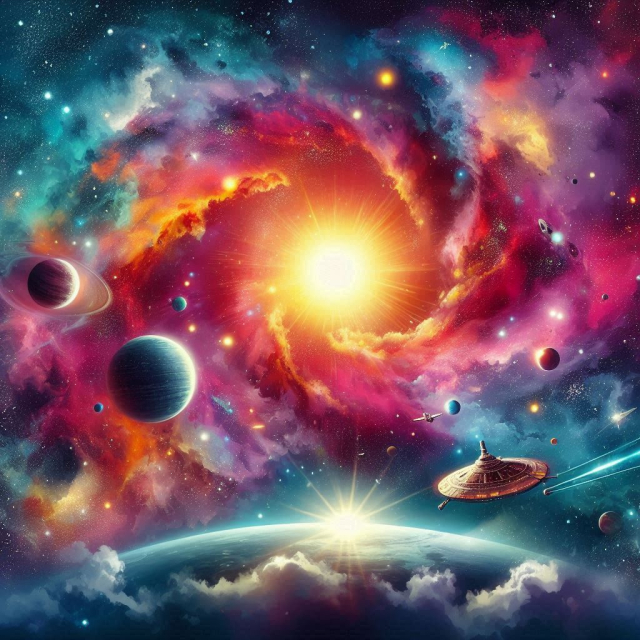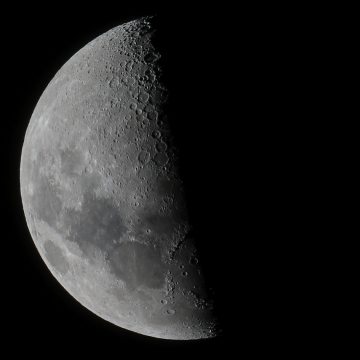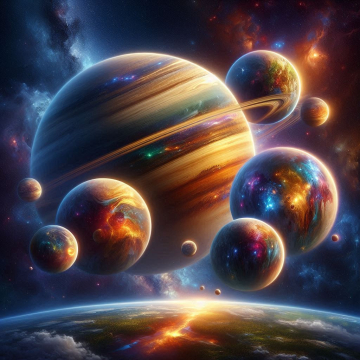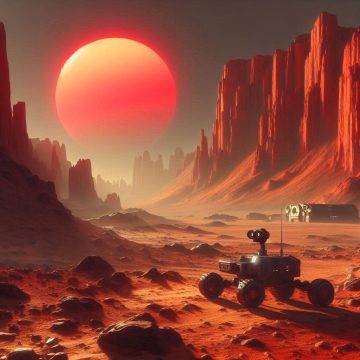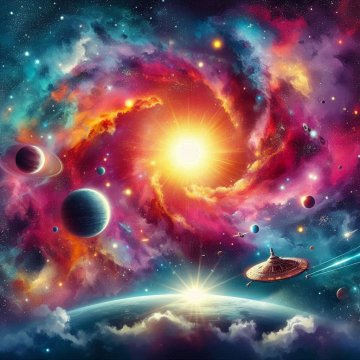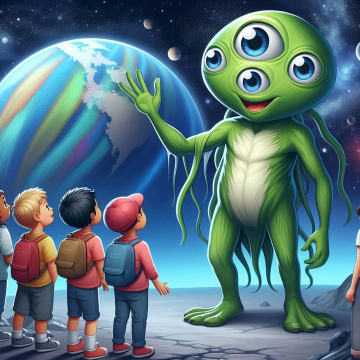Outer space has been an endless source of fascination for mankind since time immemorial. As science and technology have advanced, our understanding of the universe has grown exponentially, revealing amazing facts and curiosities about planets, stars, galaxies, and cosmic phenomena. Yet, despite great advances, space remains a vast enigma, filled with unanswered questions and jaw-dropping wonders. This article explores some of the most amazing curiosities about space, from the origin of the universe to the mysteries we still don’t fully understand.
The expansion of the universe: Faster than we think.
The universe is expanding, and it is doing so at a much faster rate than previously thought. This expansion was first discovered in the 1920s by astronomer Edwin Hubble, who observed that galaxies are moving away from us. This is known as the "red shift" phenomenon, an effect in which the light from distant objects is stretched toward the red end of the spectrum, indicating that they are moving away.
The most surprising thing is that not only is the universe expanding, but it is doing so at an accelerated rate. This has led to the discovery of dark energy, a mysterious force that accounts for about 68% of the universe. Although we cannot see or detect it directly, scientists believe that dark energy is driving this cosmic acceleration. Its true nature is still unknown, making it one of the greatest mysteries of modern astrophysics.
Black holes: Invisible giants of space.
Black holes are perhaps the most enigmatic objects in the universe. They are regions of space where gravity is so intense that not even light can escape. Black holes form when a massive star collapses under its own gravity at the end of its life. The singularity at their center is a point of infinite density, surrounded by an "event horizon," the boundary from which nothing can escape.
What makes black holes even more fascinating is that, although they are invisible, their existence can be inferred through their effects on the surrounding space. Scientists have detected black holes by observing how they affect the orbit of nearby stars or how they warp light passing by them. In 2019, humanity obtained the first direct image of a black hole, captured by the Event Horizon Telescope, representing a monumental milestone in astronomy.
Interestingly, black holes could also be connected to wormholes, hypothetical tunnels that could connect different parts of the universe, although this idea remains purely theoretical.
The twin paradox: Time behaves strangely in space.
One of the most surprising curiosities about space is how it affects time. Albert Einstein's theory of relativity states that time is not a universal constant, but can vary depending on the speed at which we move and the intensity of gravitational fields.
A famous example of this phenomenon is the "twin paradox." If one of two identical twins travels into space in a spacecraft at near the speed of light and then returns, he or she will find that he or she has aged much less than his or her sibling on Earth. This is due to time dilation, a phenomenon that occurs when traveling at extreme speeds or in the presence of strong gravity. Although we are still far from being able to travel at near-light speeds, astronauts who spend long periods on the International Space Station experience a very mild form of time dilation, aging slightly more slowly than those who remain on Earth.
The most curious planets in the solar system.
Our solar system is home to a fascinating array of planets, each with unique characteristics and curiosities that defy our understanding. Mars, the so-called "red planet," has been the subject of intense exploration because of the possibility that it may have once supported life. Studies of its surface suggest that it may have once had rivers, lakes, and seas.
Saturn is famous for its majestic rings, composed of ice, dust and rock fragments. Although these rings appear solid from a distance, they are actually extremely complex and dynamic systems that still intrigue scientists.
One of the strangest planets is Uranus, which spins on its side rather than perpendicularly like most other planets. This extreme tilt makes its seasons completely different from any other planet in the solar system, with one of its poles facing directly at the Sun for years and then turning into total darkness.
Finally, we cannot forget Pluto, which was reclassified as a dwarf planet in 2006. Although it is no longer considered the ninth planet in the solar system, Pluto remains an object of fascination due to its remote location and unusual surface features, such as ice mountains and a huge heart-shaped glacier.
The stars: Cradles and cemeteries of matter.
Stars are the energy giants of the universe, responsible for generating the light and heat that enable life. However, stars also have a limited lifespan. As they exhaust their nuclear fuel, they go through a series of phases until they meet their end. Small stars, like our Sun, expand into red giants before collapsing into white dwarfs. More massive stars can explode in supernovae, scattering heavy elements like iron and gold across the universe, which can eventually form new stars, planets, and even life.
A fascinating curiosity is that all the elements that make up our bodies and our planet, including carbon, nitrogen and oxygen, were formed in the hearts of stars that lived and died billions of years ago. In other words, we are all, in a sense, stardust.
Sound does not travel in space.
Even though space is full of catastrophic events, such as supernova explosions or galaxy collisions, we wouldn't be able to hear them. Sound needs a medium, such as air, to travel. In the vacuum of space, there are no molecules to carry sound waves, so space is completely silent.
This means that the epic space battles filled with loud explosions we see in movies are pure fiction. In reality, space is a place of total silence, where even the most violent events would not produce any sound.
The observable universe: Just a tiny fraction of the whole.
One of the greatest curiosities about space is that what we can observe makes up only a fraction of the total universe. According to scientists, the observable universe is about 93 billion light-years across, meaning that the light from the most distant objects we can see has taken 93 billion years to reach us. However, the total universe could be much larger, and even infinite.
Furthermore, most of the universe is thought to be composed of dark matter and dark energy, mysterious substances that do not emit, reflect or absorb light, and which cannot be observed directly. They make up about 85% of the total mass of the universe, meaning that everything we can see – stars, planets, galaxies – represents only a tiny fraction of the entire universe.
Storms on other planets.
The weather on some planets in our solar system is incredibly extreme compared to that on Earth. On Jupiter, for example, there is a gigantic storm known as the Great Red Spot, which has been active for at least 400 years. This storm is so large that it could contain three Earths inside it. On Neptune, winds can reach speeds of up to 2,000 kilometres per hour, the fastest in the solar system.
On Venus, the atmosphere is composed mainly of carbon dioxide, and temperatures on its surface are high enough to melt lead. In addition, its atmosphere is so dense that clouds of sulfuric acid cover the planet, creating a pressure 92 times greater than that on Earth.
Space is full of wonders and mysteries that continue to challenge our understanding. From the accelerating expansion of the universe to black holes, peculiar planets and stars, there is so much more to discover. Although we have learned a lot about the cosmos, we have barely scratched the surface of the secrets it holds. Every new space mission, every new astronomical observation, brings us a little closer to unraveling the mysteries of the universe and better understanding our place in it.
